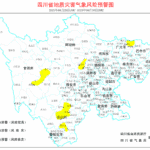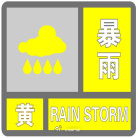On September 29th, the Greater Jiuzhai Tourism Loop Transportation and Tourism Integration Promotion Event was held in Jiuzhaigou County. During the event, Chengdu launched six premium tourism routes: the Sichuan Cultural Heritage Museum Study Tour Exploration Self-drive Route, the Panda Exploration Western Sichuan Self-drive Route, the Natural Landscapes Tianfu Scenic Tour Route, the Western Sichuan Snow Mountain Hot Spring Wellness Vacation Self-drive Route, the Intangible Cultural Heritage Craftsmanship Experience Self-drive Route, and the Rural Charm Chengdu Ancient Town Leisure Self-drive Route.
Six routes, six distinct experiences – from the warm urban atmosphere of Chengdu’s streets to the dreamlike scenery of Jiuzhaigou’s fairyland. These routes not only connect attractions like the red walls and bamboo shadows of Wuhou Temple and the cascading waterfalls of Jiuzhaigou, but also activate regional synergy, creating deep resonance among cultural tourism, transportation, and ecological industries.
First Route: Sichuan Cultural Heritage Museum Study Tour Exploration Self-drive Route.
This route focuses on tracing Sichuan’s cultural heritage, connecting nine museums in and around Chengdu through major roads including Chengwenqiong Expressway, Chengmian Expressway, Beixing Avenue, and Wuhou Temple Street. The historical materials at Dayi Jianchuan Museum record the nation’s resilience during difficult times, while Chongzhou Yanhua Pond’s pavilions and waterside structures carry the elegant poetry of Song and Yuan dynasty literati.
Traveling along Chengwenqiong Expressway into downtown Chengdu, from the cultural relics of Chengdu Museum to the dense cypress shadows of Wuhou Temple, the evolution of Tianfu civilization from ancient times to the present is clearly outlined. Beixing Avenue connects the cosmic philosophy of ancient Shu people at Jinsha Site with the mysterious imagination of Sanxingdui’s bronze sacred trees, complemented by the exquisite collections of Mianyang Museum, together revealing the brilliant and mysterious codes of ancient Shu civilization.
Second Route: Panda Exploration Western Sichuan Self-drive Route.
This route is built around the “national treasure pandas,” connecting six panda viewing locations in Chengdu and Western Sichuan through major roads including Duwen Expressway, Chengguan Expressway, Western Sichuan Tourism Loop, and Rongdu Avenue, combining both viewing and educational value.
At Chengdu Research Base of Giant Panda Breeding in Chenghua District, the round national treasures can heal all fatigue. Following Chengguan Expressway to Dujiangyan, China Giant Panda Garden and Panda Valley complement the thousand-year water conservancy marvel, creating a picture of harmonious coexistence between humans and nature. Through Duwen Expressway deep into Aba, the cries of cubs at Wolong China Giant Panda Garden and the rolling sea of clouds at Balang Mountain Panda Kingdom Summit provide a dreamlike fairyland background for these “living fossils.”
Third Route: Natural Landscapes Tianfu Scenic Tour Route.
This route focuses on “progressive natural landscapes,” connecting eight natural scenic spots in Chengdu and Western Sichuan through major roads including Chuanqing Railway, Chengdu Metropolitan Circle Ring Expressway, Chengming Expressway, Qingcheng Mountain Avenue, and Shougao Road, showcasing rich layers of landforms and scenery.
Qionglai Tiantai Mountain winds around strange rocks and through dense forests; Chongzhou Tianfu International Slow City features waving rice fields and fragrant lotus ponds; traveling through Pujiang Changqiu Mountain Forest Park, the forest breeze brushes against your face, adding wild charm with red leaves and wild fruits along the way; Pengzhou Danjing Mountain’s peonies spread like rosy clouds, living up to its reputation as “Dan Yue Dai Zong.” Particularly with the opening of the Chengdu to Huangshengguan section of Chuanqing Railway, 13 daily high-speed train pairs operate between Chengdu and Jiuzhai Huanglong (Songpan) Station, allowing rapid direct access to Aba’s layered Huanglong colorful pools and Jiuzhaigou’s marvelously carved lakes within one and a half hours.
Fourth Route: Western Sichuan Snow Mountain Hot Spring Wellness Vacation Self-drive Route.
This route centers on “hot spring wellness,” connecting seven snow mountain hot spring wellness destinations in Chengdu and Western Sichuan through major roads including Metropolitan Circle Ring Expressway, Chengwan Expressway, and Daxi Road, combining “snow mountain exploration” with “hot spring therapy” for a wellness vacation journey.
Along this route, you can appreciate Mianyang Jiuhuang Mountain’s unique Qiang ethnic customs, wash away all travel fatigue and dust at Deyang Lutang Hot Spring, encounter northern





